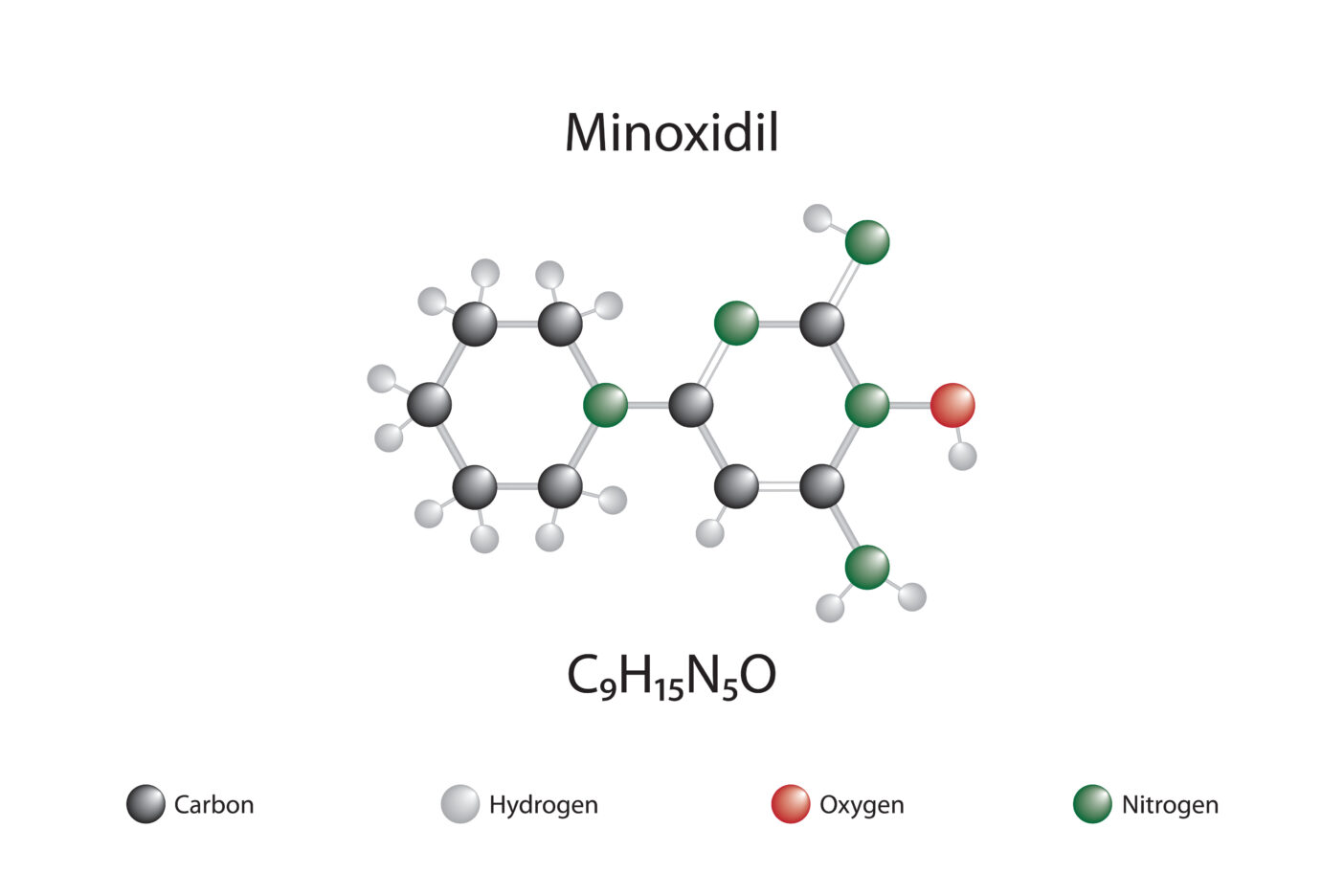Minoxidil-like active ingredients

Introduction
Minoxidil is a well-known active ingredient used to treat hair loss. In this article, we take a look at minoxidil, how it works and why it should not be used in cosmetics. We also present some minoxidil-like active ingredients that have been tested for their effectiveness in promoting hair growth.
What is minoxidil?
Minoxidil is a drug that was originally developed to treat high blood pressure. However, it was discovered that it also had the side effect of stimulating hair growth. This property has led to minoxidil being used primarily to treat androgenetic alopecia (hereditary hair loss). The active ingredient dilates blood vessels, which improves the blood supply to the hair follicles and provides them with nutrients.
Why minoxidil is not used in cosmetics
Minoxidil is a highly effective drug whose use in cosmetics is prohibited due to strict regulations and possible side effects. These side effects include skin irritation, headaches and cardiovascular problems. Minoxidil is therefore only available as a prescription drug and may not be used in over-the-counter cosmetics.
Minoxidil-like active ingredients
Various minoxidil-like active ingredients have been investigated in research. These could have a comparable effect on hair growth but are less strictly regulated and safer to use.
- Adenosine: Adenosine is an organic active ingredient that is widely found in nature. Studies have shown that adenosine promotes hair thickening and has a similar effect to minoxidil. But it acts faster against hair loss and promotes the growth of new hair. A clinical study with 156 subjects showed that adenosine significantly improved hair density and thickness. Another study with 110 subjects showed that the topical application of a solution with 0.75% adenosine had a comparable effect to a solution with 5% minoxidil, but with a higher level of satisfaction among the subjects.
- Tricho-Solve®: Tricho-Solve® is a natural hair care active ingredient derived from spruce bark extract. This active ingredient stimulates protein synthesis and cell proliferation in human hair papillary fibroblasts, resulting in increased hair growth. In vitro studies showed a 24% increase in cell proliferation and a 57% reduction in 5α-reductase. In vivo studies showed a 27% increase in hair density and a 30.4% increase in the number of hairs in the anagen phase within 90 days.
- BIO-Placenta Hair: BIO-Placenta Hair contains growth factors such as FGF, VEGF and IGF, which promote hair growth and improve the condition of the scalp. It has been shown that BIO-Placenta Hair induces the expression of hair growth markers such as Sox2 and Alp, resulting in a significant increase in hair growth. Ex vivo tests showed a significant increase in hair shaft length and increased cell proliferation in human dermal papilla cells (HDP). Clinical tests on 18 women showed an increase in eyelash density of 2.12% after four weeks of use.
- Plant C-Stem Bamboo: This active ingredient is extracted from the vacuoles of bamboo cells and contains bioactive components that promote hair growth and reduce hair loss. Studies have shown that Plant C-Stem Bamboo significantly increases collagen synthesis and hair density. A clinical study with 20 volunteers showed an 18% reduction in hair loss and an 8.3% increase in hair density within 12 weeks. Ex vivo studies showed a significant increase in hair shaft length of up to 14% after 7 days of treatment.
Conclusion
Minoxidil-like active ingredients are a promising alternative to minoxidil, as they offer similar benefits for hair growth but are less strictly regulated and safer to use. Adenosine, Tricho-Solve®, BIO-Placenta Hair and Plant C-Stem Bamboo are just a few examples of active ingredients that have the potential to effectively combat hair loss and promote hair growth. These minoxidil-like active ingredients could play an important role in hair care in the future.
Please contact us if you would like to use these active ingredients for your new hair care products.
Literature:
Minoxidil and its use in hair disorders: a review.
Suchonwanit P, Thammarucha S, Leerunyakul K.Drug Des Devel Ther. 2019 Aug 9;13:2777-2786
Kim J, Shin JY, Choi YH, Kang NG, Lee S.Molecules. 2022 Mar 28;27(7):2184
Kim J, Shin JY, Choi YH, Joo JH, Kwack MH, Sung YK, Kang NG.Int J Mol Sci. 2024 Jun 13;25(12):6534